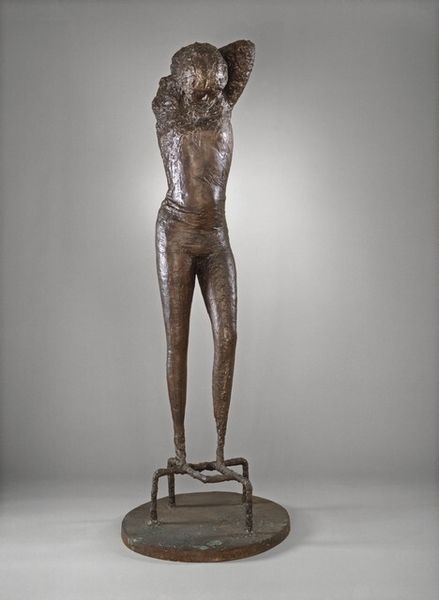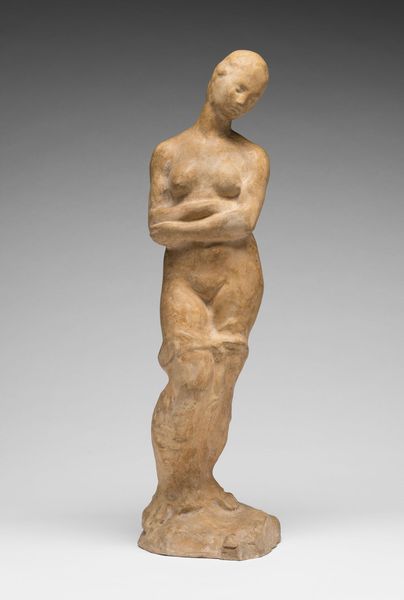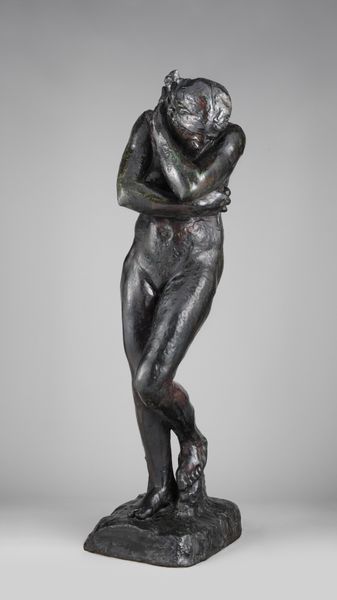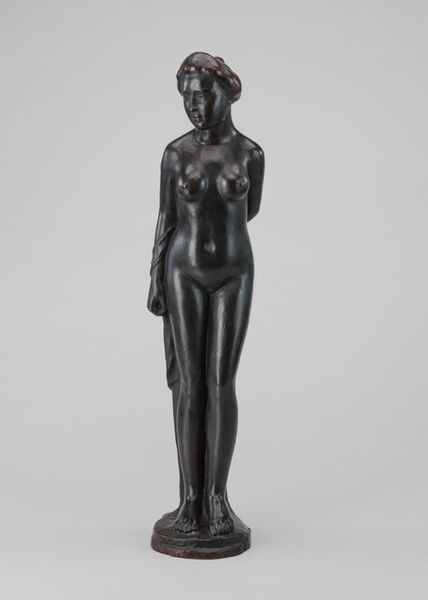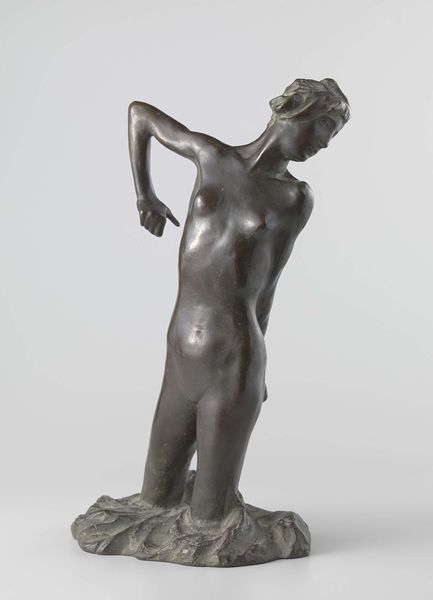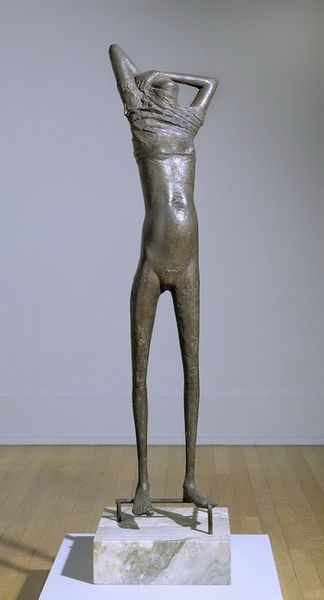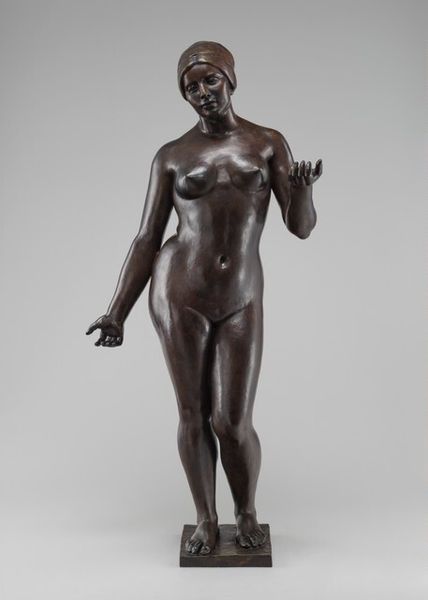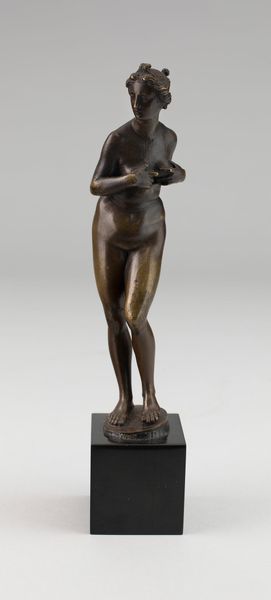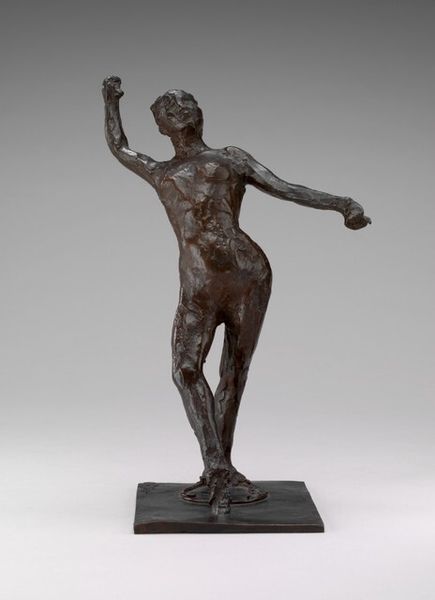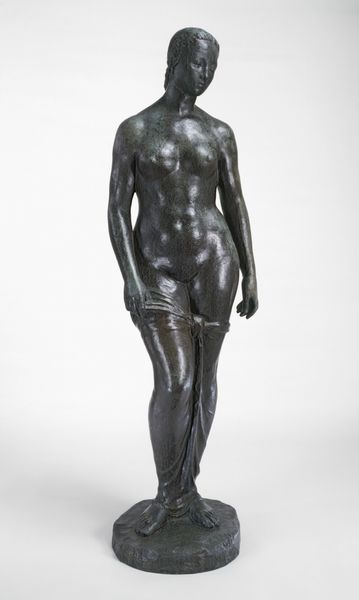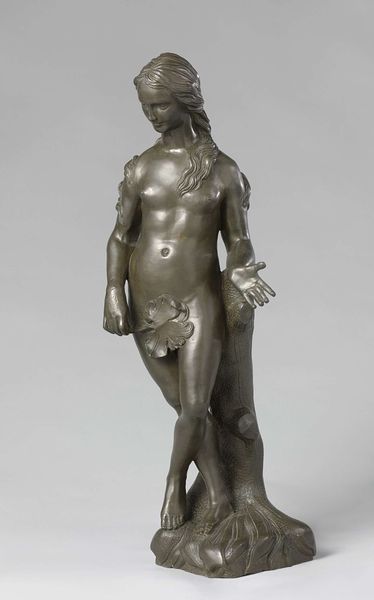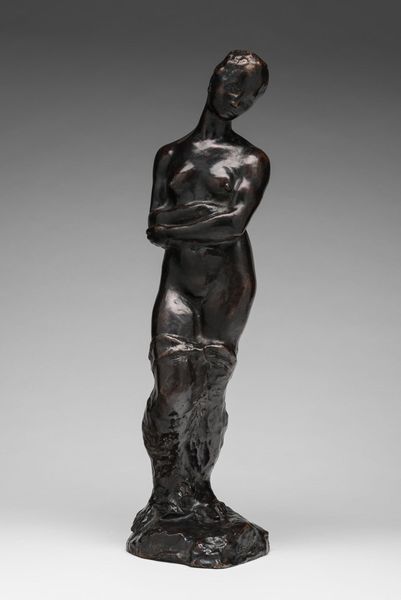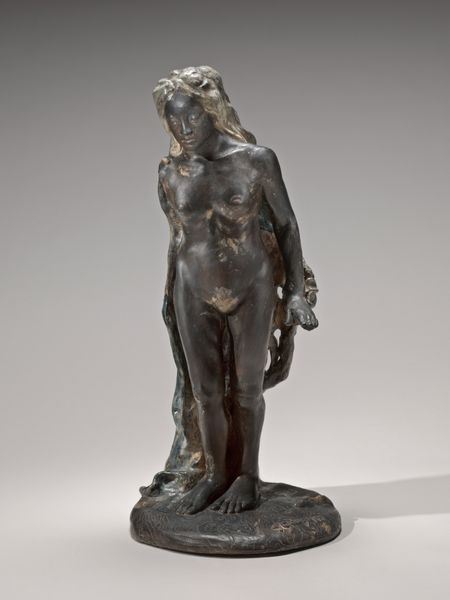
bronze, sculpture
#
portrait
#
bronze
#
figuration
#
sculpture
Dimensions: overall (height): 128.27 cm (50 1/2 in.)
Copyright: National Gallery of Art: CC0 1.0
Curator: Before us stands "Standing Woman," a bronze sculpture created by Georg Kolbe in 1926. Editor: There's something incredibly melancholic about her stance. She appears to be caught between moments, turned away, perhaps reflecting on something weighty. I see a societal reflection in the bronze. Curator: Kolbe, during this period, was fascinated with the human form and how it interacted with its surrounding space. We must view his sculptures against the backdrop of the Weimar Republic, a time of both unprecedented artistic freedom and crippling economic hardship. Editor: Exactly. There's a vulnerability here. Though she is nude, confident even, that averted gaze reads to me as self-consciousness and an awareness of being looked at, judged by contemporary values. The female nude has long been a battleground for societal ideals and norms. Curator: Indeed. The rough texture of the bronze further enhances this tension. It keeps the figure from being idealized in a classical sense, aligning instead with the expressive style that was popular among artists reacting against traditional academic approaches during that inter-war period. Editor: It's that unpolished quality that resonates. We're seeing her almost unfinished, as if Kolbe wanted to expose her not as a perfect image but as an organic human with her flaws and imperfections showing through the material of bronze. The woman isn’t posed as an object of beauty but presents herself to be. The gaze isn’t directly ahead so it empowers us to become curious as we reflect ourselves onto her, creating a complex encounter with self. Curator: Kolbe achieved a considerable public following through his monument commissions in the 1920s. Examining the socio-political conditions provides important contextual layering. In viewing it as a relic of such complex political circumstances, it becomes a commentary on German society at the time, no longer as just an aesthetically pleasant statue. Editor: What stays with me is that lingering gaze. It evokes this overwhelming sense of womanhood that has had to persevere. This sculpture has been recontextualized as the political atmosphere of its beginnings has shifted. So the lingering question it proposes is this: has anything really changed?
Comments
No comments
Be the first to comment and join the conversation on the ultimate creative platform.
